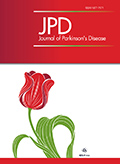Authors: Dos Santos, Altair B. | Skaanning, Line K. | Mikkelsen, Eyd | Romero-Leguizamón, Cesar R. | Kristensen, Morten P. | Klein, Anders B. | Thaneshwaran, Siganya | Langkilde, Annette E. | Kohlmeier, Kristi A.
Article Type:
Research Article
Abstract:
Background: Parkinson’s disease (PD) is a neurodegenerative disorder associated with insoluble pathological aggregates of the protein α -synuclein. While PD is diagnosed by motor symptoms putatively due to aggregated α -synuclein-mediated damage to substantia nigra (SN) neurons, up to a decade before motor symptom appearance, patients exhibit sleep disorders (SDs). Therefore, we hypothesized that α -synuclein, which can be present in monomeric, fibril, and other forms, has deleterious cellular actions on sleep-control nuclei. Objective: We investigated whether native monomer and fibril forms of α -synuclein have effects on neuronal function, calcium dynamics, and cell-death-induction in two sleep-controlling nuclei:
…the laterodorsal tegmentum (LDT), and the pedunculopontine tegmentum (PPT), as well as the motor-controlling SN. Methods: Size exclusion chromatography, Thioflavin T fluorescence assays, and circular dichroism spectroscopy were used to isolate structurally defined forms of recombinant, human α -synuclein. Neuronal and viability effects of characterized monomeric and fibril forms of α -synuclein were determined on LDT, PPT, and SN neurons using electrophysiology, calcium imaging, and neurotoxicity assays. Results: In LDT and PPT neurons, both forms of α -synuclein induced excitation and increased calcium, and the monomeric form heightened putatively excitotoxic neuronal death, whereas, in the SN, we saw inhibition, decreased intracellular calcium, and monomeric α -synuclein was not associated with heightened cell death. Conclusion: Nucleus-specific differential effects suggest mechanistic underpinnings of SDs’ prodromal appearance in PD. While speculative, we hypothesize that the monomeric form of α -synuclein compromises functionality of sleep-control neurons, leading to the presence of SDs decades prior to motor dysfunction.
Show more
Keywords: Biomarkers, excessive daytime sleepiness, mechanism of disease, neurodegenerative diseases, neuronal alterations, prodromal phase, REM sleep behavior disorder
DOI: 10.3233/JPD-212554
Citation: Journal of Parkinson's Disease,
vol. 11, no. 4, pp. 1773-1790, 2021
Price: EUR 27.50






